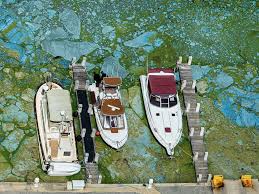As 2016 has meandered through its Spring and Summer months, various parts of the USA have demonstrated once again the all-too-familiar relationship between Harmful Algae Blooms (HAB) and agriculture.
The consistent and major culprit: farm runoff. This impressive study (2014) conducted by a consortium of State of Ohio Agencies comprehensively presents the impact of runoff as it exports excessive levels of phosphorus into waterways which eventually flow into lakes like Lake Erie (OH & MI), or Lake Okeechobee (FL), or Utah Lake (UT), or Pyramid Lake (CA).

It has been suggested to me, by various primary and secondary expert sources in WI and OH, that farm runoff from unregulated farms contributes 60% or more of the phosphorus load that creates HABs. I have thus far been given no quantifiable reason to question that estimate. In fact, I am inclined to move the figure higher still.
In an upcoming article I will discuss the disproportionate amount of manure a dairy farm with as few as 500 cows can create, in comparison with a city of people. Suffice to say, if I told you one cow on an unregulated farm can generate 1000 times more waste than one person living in a municipality with a satisfactory waste treatment system — well, that number is probably conservative.
And shocking.


